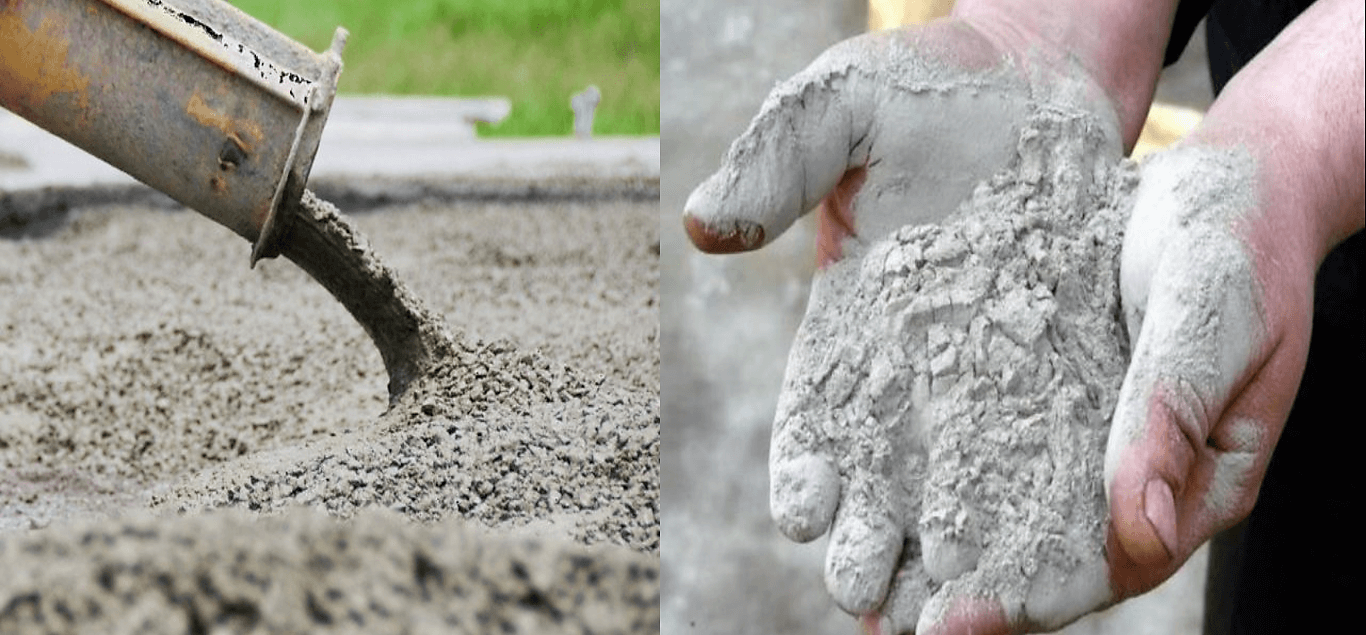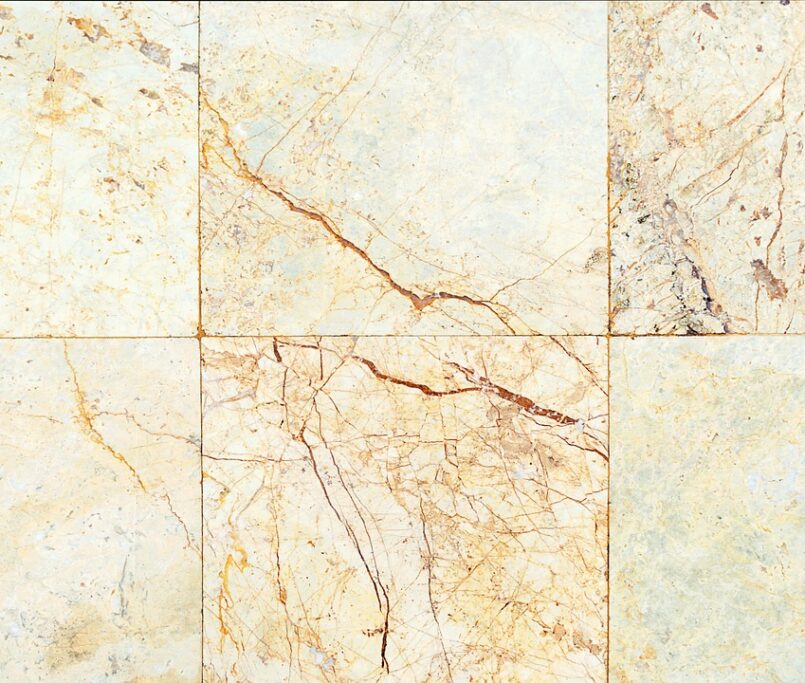The Differences Between Cement and Concrete
Even though the terms cement and concrete are frequently used synonymously, cement is a component of concrete. Concrete is a compound composed of aggregates and paste. As aggregates, sand and gravel or crushed stone are used, and a paste of water and Portland cement is used.
Cement makes up about 15% of the overall amount of the concrete mix. The water and cement harden and attach the aggregates into a rocklike solid via a process known as hydration. This hardening procedure goes on for years, inferring that concrete will become stronger with age. In this article, we will examine the differences between cement and concrete.
The Basics of Cement
Cement is a binding agent that can bind together various building materials. Portland cement is the most commonly used type in the construction industry, and one of the essential ingredients in concrete is Portland cement.
Portland cement comprises a few primary ingredients, including limestone, sand or clay, bauxite, and iron ore. Shells, chalk, marl, shale, slag, and slate may also be present. In cement manufacturing plants, these various components are combined and heated to form clinker, a rock-hard substance. The clinker is then ground to a powder mixed with water to create a paste.
Types of Cement
In the construction sector, multiple varieties of cement are used. The properties and composition of materials used during the manufacturing process distinguish each type of cement.
-
Ordinary Portland Cement (OPC)
Ordinary Portland Cement (OPC) is a type of cement that is fabricated and utilised all over the world. It is frequently utilised in the production of concrete. When OPC is mixed with aggregates and water, it forms concrete, which is widely used in construction. Masonries also use OPC as a mortar and can also be used as a plaster to give the walls a smooth finish. In addition to the previous applications, Ordinary Portland cement is also used to make grout, wall putty, solid concrete blocks, and various types of cement.
-
Portland Pozzolana Cement (PPC)
Limestone and clay are the primary raw materials used to produce Portland Pozzolana cement. PPC is commonly used in hydraulic structures, marine structures, seashore construction, dam construction, etc. It is also suitable for use in masonry mortars and plastering.
-
White Cement
The only difference between white and grey Portland cement is the colour and fineness. The colour of this cement is determined by its raw materials and the production process. White cement is typically used for high-end construction projects and decorative purposes, and it is also used to make colourful concrete and mortars.
It is used in interior, exterior decorations, flooring, and ornamental concrete products due to its whiteness, whereas grey cement is primarily used for construction. Because of its high reflectiveness, it is used on roads to improve the visibility of highway medians.
What is Cement Used for?
Cement is mainly used as a binder for concrete, a primary material for all types of construction, including roads, houses, ports and dams, as well as decorative applications such as patios, floors, staircases, and items such as tables, sculptures, or bookcases. Cement is a versatile and dependable building material with numerous applications.
How is Cement Made?
Cement is produced by mixing calcium, silicon, aluminium, iron, and other ingredients in a precise chemical process. Cement is commonly made from limestone, shells, chalk or marl combined with shale, clay, slate, blast furnace slag, silica sand, and iron ore. When these ingredients are heated to high temperatures, they combine to form a rocklike substance that is ground into the fine powder we know as cement.
The Basic of Concrete
Concrete is a long-lasting building material that contains cement as one of its constituents. Concrete comprises four main ingredients: cement, stone, sand, and water. The less water added to a concrete mixture, the stronger the mixture. Water activates the cement, which acts as a binding agent in concrete, and the cement holds the aggregates in the mix together. Larger aggregate mixes are typically stronger than finer aggregate mixes.
Types of Concrete
There are numerous types of concrete, some of which can serve the same function. All of it is dependent on your objectives. To complete the task, you can select the appropriate type of concrete.
-
Concrete of Average Strength
This concrete contains all the essential ingredients, including concrete, sand, and aggregate. It is generally used for low-tensile pavements or buildings, and it is not suitable for many other structures because it cannot withstand the stresses caused by wind loading or vibrations.
-
Plain Concrete
This additional concrete utilises the standard mix design with cement, sand, and aggregates as its constituents. It can be used to make pavement or buildings without requiring tensile strength. Dams are also built with plain or ordinary concrete, which has an excellent durability rating.
-
Reinforced Concrete
This type of concrete is common in industry and modern construction. Placing wires, steel rods, or cables in reinforced concrete before it sets increases its strength. These items are more commonly known as rebar. Lately, fibres have been utilised to strengthen this concrete. Tensile forces resist these reinforcements, while the concrete itself resists compressive forces. They form a strong bond, allowing the two materials to withstand various applied forces. They merge into a single structural element.
-
Precast Concrete
This concrete is manufactured and cast in a factory to precise requirements. The precast concrete units are then delivered to the job site and assembled, commonly used in precast walls, concrete blocks, and stairwell units. The use of precast concrete has the advantage of being quick to assemble, and the units are high quality because they are manufactured in a factory.
-
Lightweight Concrete
Any lightweight concrete has a density of less than 1920kg/m³. Lightweight aggregates are used to make lightweight concrete, and aggregates are ingredients that increase the density of a concrete style. Natural materials such as scoria or pumice, artificial materials such as clays and expanded shales, and processed materials such as vermiculite and perlite are examples of lightweight aggregates. Its most important characteristic is its extremely low thermal conductivity. Lightweight concrete is commonly used to construct long-span bridge decks and building blocks and is also useful for protecting steel structures.
-
Prestressed Concrete
Prestressed concrete is made using a unique technique, containing bars or tendons, just like reinforced concrete. Prestressed units are typically created and assembled on-site. Prestressed concrete is used to construct bridges, heavy-duty structures, and long-span roofs. Many large concrete projects make use of prestressed concrete units.
What is Concrete Used for?
Concrete is widely used in urban infrastructure, from interstate highways to skyscrapers. Concrete can be found almost anywhere, which is not unexpected given that it is the most commonly used artificial material on the planet.
Concrete is a highly versatile building material with malleable or solid properties depending on its curing stage. It is made up of aggregates and rocks combined with a fluid cement. Concrete hardens into a rocklike mass after a certain time due to a chemical reaction known as hydration. It becomes highly durable and strong enough to support bridges, skyscrapers, and dams when it hardens.
How is Concrete Made?
When making concrete, you must use the correct proportions to achieve the desired quality regardless of what you intend to use it for. To make concrete, you can use one of two different mixes:
This mix is used for ordinary construction, such as small residential structures. The most common nominal mix ratio is 1:2:4. The first number represents the cement ratio, the second the sand ratio, and the third the aggregate ratio required based on the weight or volume of materials.
Design combination: The design mix, also known as mix design, is based on proportions determined by lab tests to determine the compressive strength of the mixture. The strength required will be determined by the structural design of the concrete component.
The mixing you use determines the quantity and quality of concrete you require.
Cement vs Concrete: The Difference
Many confuse the terms concrete and cement, believing they are interchangeable. It is simple to mix up the meanings because many people are unaware that one is required for the other to exist. The distinction between cement and concrete is that cement is an ingredient in concrete. Concrete comprises aggregates such as sand, gravel, crushed stone, and a paste made of water and cement.
FAQ About Cement and Concrete
Which One is Stronger?
Concrete is far more durable than cement. Cement is a strong material in its own right, but it pales in comparison to concrete. Because of this, cement is typically used for smaller, more decorative projects.
What Should I Use?
When discussing the durability differences between cement and concrete, it is critical to emphasise the timeline that you should keep in mind. If properly maintained, a suitable cement structure can last for decades. An adequately maintained concrete structure, on the other hand, has the potential to last for centuries. Therefore, if you are planning a small home improvement project, you should definitely look into cement. It can save you a lot of money while still lasting for years.
Can Cement be Used by Itself?
Because cement is a binding agent, it is rarely used on its own. Water and aggregates must be added to cement to make concrete or mortar.
You can read our previous article at https://emininsaat.com.tr/en/why-should-you-choose-white-cement-for-perfect-white-walls/




What are the Different Types of Aggregate? - Emin Construction Inc.
10 November 2022[…] You can read our previous article at https://emininsaat.com.tr/en/the-differences-between-cement-and-concrete/ […]